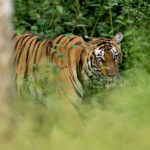Complete List of National Parks & Wildlife Sanctuaries of Jharkhand
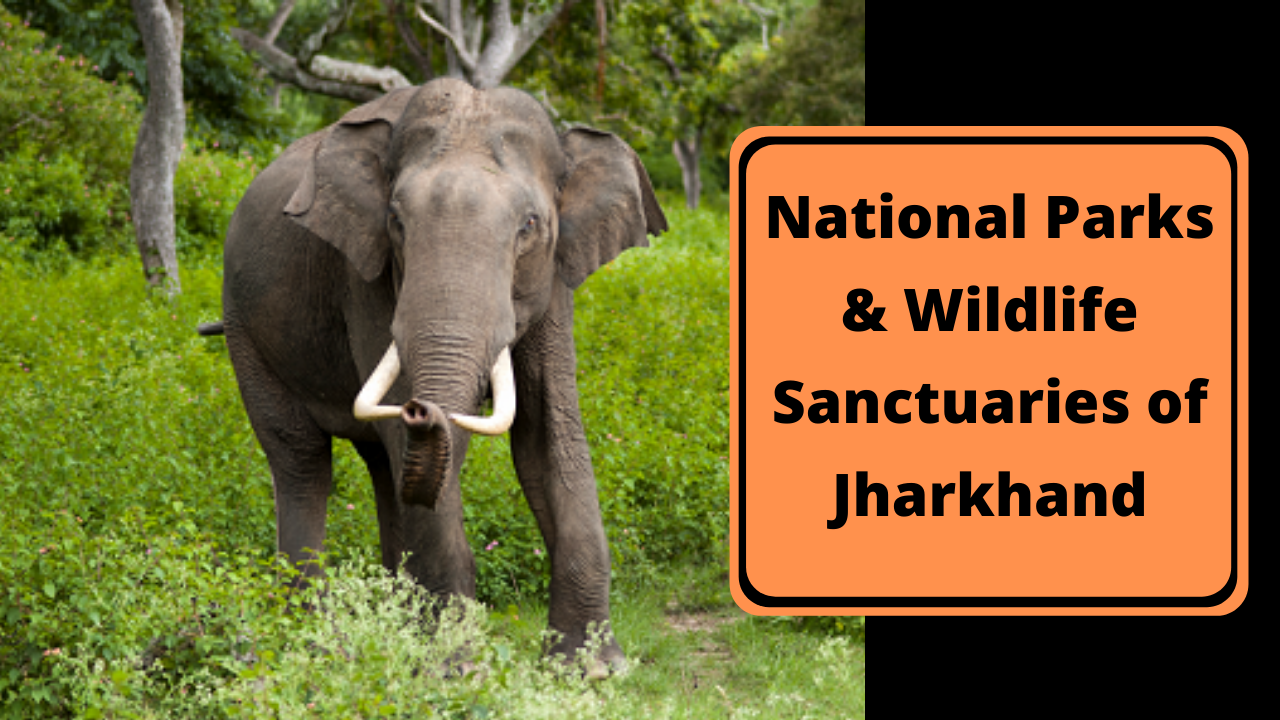
Complete List of National Parks & Wildlife Sanctuaries of Jharkhand
Translated to Hindi as the land of forests, Jharkhand was formed in the year 2000. It is the 15th largest state in India with an area of around 79,710Sq Kms and is blessed with forests, wildlife, and waterfalls. Jharkhand is famously known as heaven for nature lovers. Be it family, friends, kids, or parents Jharkhand has something or the other to offer when it is seen as a tourist destination. Bokaro attracts students and trainees from all over the globe to help in the research and development of the steel manufacturing unit. Jamshedpur makes way to students and researchers interested in training and conducting research.
Wildlife sanctuaries in Jharkhand
The state name translates into the Land of Forests, there a lot of forest areas are conserved to protect wildlife and nature. Here are the famous national parks and wildlife sanctuaries in the state-
Below is the complete list of all wildlife sanctuaries & national parks including bird sanctuaries, forest reserves of Jharkhand, India
1 Betla National Park
2 Dalma Wildlife Sanctuary
3 Gautam Buddha Wildlife Sanctuary – JH
4 Hazaribagh Wildlife Sanctuary
5 Koderma Wildlife Sanctuary
6 Lawalong (Chatra) Wildlife Sanctuary
7 Mahuadanr (Wolf) Wildlife Sanctuary8 Palamau Wildlife Sanctuary & Tiger Reserve
9 Palkot Wildlife Sanctuary
10 Parasnath Wildlife Sanctuary
11 Topchanchi Wildlife Sanctuary
12 Udhwa Lake Wildlife Bird Sanctuary
Betla National Park
Betla was one of the first national parks to become a tiger reserve under Project Tiger, in 1974. The park is located in the Latehar and Palamu district of Jharkhand. Speaking about the flora here, the forests have a vast range of vegetation consisting of sal and bamboo as the major components along with a number of medicinal plants.
The park has a variety of diverse ecosystems and abundance of wild animals. Elephants are usually seen in large numbers between the end of the monsoon season, and the time when water holes begin to dry in March.
The park is home to predators like the sloth bear and panther, while scavengers include the wolf, jackal, and hyena. Other creatures include large herds of gaur and chital, large families of langurs, monkeys, giant squirrels, mouse deer, sambhar deer, four-horned antelopes, nilgai, kakar, Civets, pangolin, porcupine and mongoose. White tigers were transported to zoos a while ago.
There are elephant rides and jeeps available with guides for exploring the park. Watch towers and ground hides have been built to get the best sighting of wildlife.
While the park is open throughout the year, the wildlife sightings are highest in summer (May to June. The recommended time to visit in terms of climate is between November and March.
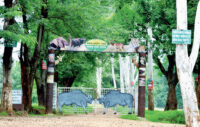
Dalma Wildlife Sanctuary
Dalma Wildlife Sanctuary is located just 10 km from the city of Jamshedpur, situated around the Dalma Hills. Inaugrated in 1975, the park has a reasonable number of elephants. The forest of Dalma Wildlife Sanctuary is covered with dry peninsular sal and northern dry mixed deciduous forest.
Dalma is known as a paradise for elephants. The count goes to 100 in number in the peak of summer where the waterholes deep inside the sanctuary quench their thirst.
Beside elephants there are giant squirrel, sloth bear, deer, wild boar, porcupine, mouse deer, pangolin, mongooses and many more in the sanctuary. Commonly sighted birds are the falcons, golden oriole, Indian tree pie, paradise fly catchers, grey hornbills, peafowl, varieties of king fishers, herons, egrets, mynas, pigeons, racket tailed drongo, magpie robins etc.
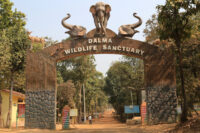
Gautam Buddha Wildlife Sanctuary
Established in the year 1976, Gautam Buddha wildlife sanctuary covers an area of 259 square kilometers. The wildlife reserve is located between Bihar and Jharkhand and was a private hunting reserve before being known as a wildlife reserve. The reserve is spread across Gaya district of Bihar state and Koderma district of Jharkhand state.
The rich and diverse ecology here, with several ecosystems coexisting together have created an intense biodiversity in the forests.Wildlife here include leopard, elephant, common langur, wild dog, giant squirrel, barking deer, hyena, nilgai, sambhar, wild pig, jackal, fox, pangolin, porcupine and many more.
Hazaribagh Wildlife Sanctuary
Previously popular as Hazaribagh National Park is 89 km north of Ranchi. Established in 1955, the forest reserve is located in low hilly terrain, at an average altitude of 615 metres (2,018 ft), it has an area of 184 square kilometers.
Several dams have been built and more are in process of construction. The purpose is to create pools of water where the animals may drink in summer. Hazaribagh is home to species like sambar, nilgai, chital, peafowl, sloth bears, black bears, hyenas and pigeons.
Koderma Wildlife Sanctuary
Located in the Koderma district of Jharkhand, the forest reserve is spread across 15062.77 hectare. The reserved forest is declared as a wildlife sanctuary under administrative control of wildlife division, Hazaribagh. The popular trees in Koderma forest reserve are Sal, Bija, Gamhar, Khair, Palash, Salai, Semal, Bair, Arjun, Karam, Siris, Kaj, Kend, Mahulan, Mahua, Karanj, Ratti, and so on.
The wildlife include tiger, leopard, sloth bear, sambhar, cheetal, barking deer, nilgai, wild boar, giant squirrel, jackal, fox, hyaena, langur, porcupine etc. besides a variety of bird and various species of reptiles.
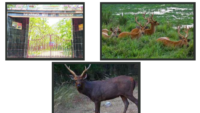
Lawalong (Chatra) Wildlife Sanctuary
Located in the Chatra district in the state of Jharkhand, the sanctuary is surrounded by the Amanat River in the south, the Chako River in the west and the Lilajan River in the north-east.
The wildlife sanctuary is covered with Northern Tropical Dry Deciduous Forests. The forests are diversified in nature and the canopy is moderately close with trees of good height and diameter growth. The ‘sal’ tree is found all over. It is spread over an area of 207 square kilometers.
Rhesus macaque, common langur, Indian elephant, sambhar, leopard, spotted deer, barking deer, sloth bear, jungle cat, common mongoose, and the dhole are the common wildlife species found here.
Mahuadanr Wildlife Sanctuary
Mahuadanr sanctuary is situated in the scenic Chechari Valley in Mahuadanr village, Latehar district, approximately 200 km from the capital city, Ranchi. It is popularly known as the only Wolf sanctuary of India.
The wolves normally visit the breeding dens built within the forest area from October to November and February to March every year, making it the best time to visit. The sanctuary remains closed during the monsoon.
Palamau wildlife sanctuary and tiger reserve
Part of Betla National Park, Palamau wildlife sanctuary is one of the nine original tiger reserves in India. The area in Latehar District was protected under the Indian Forests Act in 1974. Earlier, the area was used for cattle grazing and camping; it was acutely prone to forest fire. The tiger reserve has a total area of 1,129.93 square kilometres with a core area of 414.93 sq. km and a buffer area of 650 sq. km.
Palkot wildlife sanctuary
Located 25 km from Gumla and 92 km south east of Ranchi, Palkot Wildlife sanctuary was established in the year 1990. The forest reserve is covered with dry deciduous forests. elephants, leopards, bears jackal, monkey, porcupine, hare, and many more to look upon here.
Parasnath Wildlife Sanctuary
Surrounded by the lush greenery, as the famous Parasnath hills with one of the best picturesque places in Jharkhand. Also, it is the highest point from the sea level in Jharkhand. The wild fauna comprises Leopard, sloth bear, sambhar, nilgai, barking deer, monkey, mongoose, jungle cat, porcupine, hyena, and so on. The flora part comprises mixed deciduous forests with high incidence of climbers.
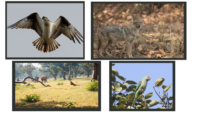
Do’s and don’t’s while on safari:
Do’s
Groom up right for the adventure
Wear light colored dress. Make sure that the cloth you wear covers the limbs. Avoid bright colors. Multi colored dress is recommended while on safari.
Less luggage more comfort
This is usual and better understood by the regular travelers. Carry as less luggage as possible, which holds good for any of the expeditions. Safari expeditions can be tiresome and exhausting and carrying only what is required helps ease your tension.
Stay calm
Making unnecessary noises would only end up inviting trouble. Stay excited but being calm and composed throughout the exploration.
Do not miss your camera.
Smile! You are on a camera throughout the venture. You will come across wildlife sightings that are unexpected, breathtaking, and once in a lifetime moment. Capture them with a smile.
Carry your sunglasses, hats, and sunscreen to keep yourself safe from sun rays and sunburns. Wear strong jungle shoes along with socks. Avoid footwears which expose your feet to wild nature.
Always have an expert guide
The naturalists are the crew who had been in and around the jungle for years. You need a high chance of sighting wildlife; it is always recommended to have them for your venture.
Don’t’s:
No littering
Ground rule – Do not carry non biodegradable materials. The forest officials in any forests are strict of this and you may end up paying hefty funds just to ruin your holiday. Cleanliness is the key.
No feeding to animals
This is like digging your own grave. The behavior of wild animals are predictable to no one and hence feeding them would be risky.
Cellphones switched off throughout the drive
You are on a vacation and no official/unofficial calls should spoil your vacation. Long press the power button of your device and keep it aside.
No loud conversations
The excitement level will be at peak especially at the time of sighting. Just enjoy the moment with less or no talks.
No smoking or liquors
Wildlife safari is a way to connect with nature and any toxication is not at all entertained.
Do not over rely on properties for safari vacations.
There are a lot of licensed properties who can arrange for safari drives when you book with them. However, they do not promise. Pro-tip. Confirm your safari drives before booking the properties.
Why To Book With WildTrails
6 Benefits of booking your holiday with WildTrails
- Hassle free booking experience.
- Airport/ railway station, bus stand pick-up and drops shall be arranged.
- 24X7 support assistance from the experts.
- Expert Tiger Tracker for your safari.
- Sightings data (Exclusively from Wildtrails) for effective planning of your wildlife venture.
- We take care of your complete holiday, from transfer, accommodation, safari, meals to make it stress-free.

With 4 years of Sightings data + Extensive expert tracker network in jungles, our customers had the best wildlife experiences.
Buy Wildlife Fashion Accessories
Exclusive Online Store for wildlife products
Packages
Packages Loading...
Recent Posts







